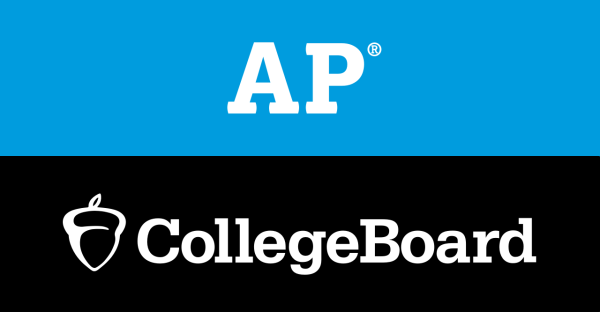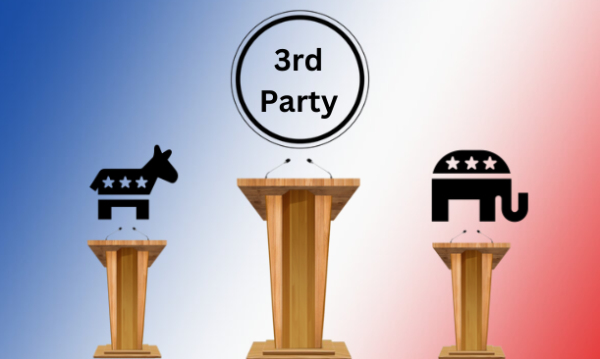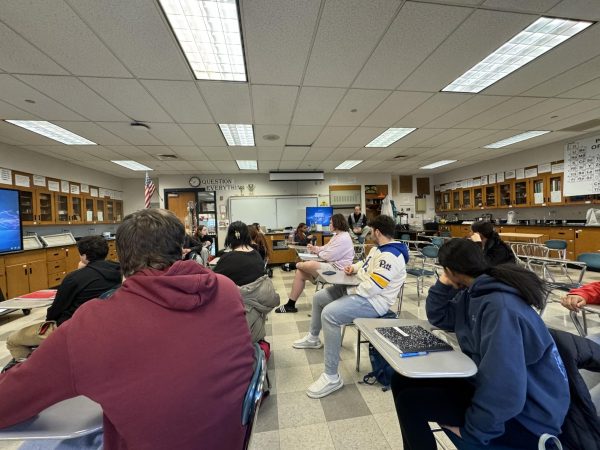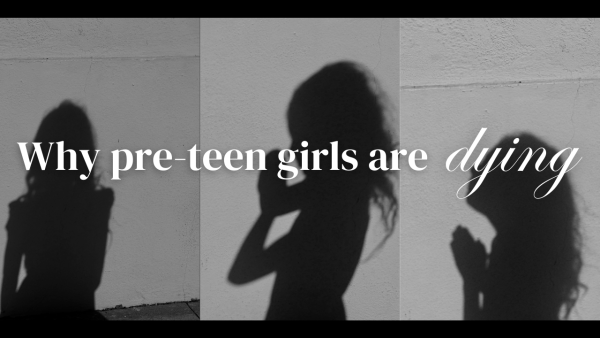A response to “Editorial: Should college be free?”
Senior Reid Dentner writes an article in response to Mikaela Mosley’s “EDITORIAL: Should college be free?”

University of Toledo commencement ceremony, Saturday, May 5, 2018, in Toledo, Ohio. (AP Photo/Carlos Osorio)
When dissecting the American higher education system, one thing must be made clear: there is no such thing as a free lunch. Professors and support staff are not volunteers. Buildings will not construct themselves. No nation, no matter how wealthy or powerful, can provide free tuition. Instead, the debate in our country is focused on the merits of taxpayers completely subsidizing the cost of tuition at public universities.
First, several statistics in the original editorial were not explained in adequate detail. The article states that “the average annual increase in college tuition from 1980 to 2014 grew by nearly 260%,” while “America’s real wages have remained flat.” At first glance this statistic sounds intimidating, but the economic vocabulary used, whether intentional or not, misleads readers. “Real wages remaining flat” refers to the mean income adjusted for inflation. This means that the average family in 2014 can purchase the same amount of groceries, soap, gasoline, and tuition as the average family in 1980 could afford. Comparing real wages to prices that are subject to inflation is unfair at best and devious at worst.
Regardless of adjusting wages, 260% still sounds like an exorbitant increase. Thanks to the magic of compounding however, higher education costs have increased at a rate of approximately 2.8% every year. For reference, the Federal Reserve sets its target inflation rate at 2%. While slightly higher than hoped, comparing the price of tuition alone does not represent the overarching changes in the higher education system. There has been a notable increase in the demand of a college education as 54% of students went from high school directly to college in 1992 while 63% of students did so in 2014 (1). With demand in the market so evidently increasing, prices must increase to compensate for hiring more professors and building more dorms. Education costs have remained appropriate compared to its market and general trends in America over the past several decades.
Although participation rates are rising, proponents argue that the rate could be brought to 100% by making tuition fully subsidized. The argument fails however, as many individuals do not plan to or need to attend college. By removing all costs from college, more students are nearly guaranteed to matriculate, but the education taxpayers are providing will add no value to the future economy. Without any barrier of cost, the government is incentivizing students to enroll, even though they might be better suited going to a trade school or entering the workforce directly, saving taxpayers four years of costs while simultaneously earning their own wages in time they would have effectively lost to an education that provided them nothing. Although a college education is one of the best investments an individual can make, it is not a cure-all that automatically promises a better life, nor is it beneficial to large parts of the American economy.
The argument for some remains that whether it’s in 2010 dollars or 1980 dollars, the cost of attendance at a four-year institution has been and continues to be too high. The article states that hopeful students can expect to “take $35,000, multiply it by four, and then make plans to take it out of your family’s bank account.” However, Data by College Board finds the average tuition and fees associated with a four-year public in-state school to be $9,410 each year, or about $38,000 for four years (2). This total still represents an incredibly large, perhaps impossible, investment for many families, but it does not include scholarships and grants available.
The bulk of most students’ financial aid and the core of the current system to make college education accessible in the United States is the Pell Grant program. For families needing financial assistance, the 2018 maximum grant is $6,095 annually (3). This means an undergraduate studying in-state could expect to enter the workforce with less than $15,000 of debt without factoring in any work study or subsidized loan programs. While $15,000 is still a pretty big pill to swallow, it is much easier to down that pill knowing that people with a bachelor’s degree earn $21,000 more annually than high school graduates (1).
Another important quality of Pell Grants is that they are eligible for use at virtually every public and private institution of higher learning in the United States. The major issue with taxpayers fully funding the cost of tuition at public universities is the exclusion of private colleges, which accounts for 30% of the four-year undergraduate population in the US (4). By making tuition free at public universities, the government would be stifling competition and effectively limiting individual choice in one of the most major decisions of a young person’s life. The possible discrimination against private colleges would negatively impact both applicants and institutions as students would be channeled to certain colleges and colleges would lose a large group of students they hoped to recruit.
The exclusion of private colleges in fully funding public tuition goes beyond the effects of competition, however. Of the top twenty national universities in America per US News & World Report, exactly zero are entirely public. Of the top ten historically black colleges and universities, two are entirely public. Transitioning to “tuition-free” public colleges would destroy established paths for students to gain a better life. Top universities for years have focused on increasing the racial and socioeconomic diversity of their classes. By making taxpayers fully fund public institutions instead, the government would in effect be handing these universities (along with the resources, internships, and networks associated with them) back the elite who can afford the $50,000 per year for the opportunities these schools provide. If the point of higher education is to give any student the ability to lead comfortable, meaningful lives, shifting the focus to public institutions is one of the worst options available.
In sharing my beliefs, I believe it is important to address my biases. Next year I will be attending Washington and Lee University, a private institution. I am only able to attend because I was fortunate enough to receive generous aid. My final options were W&L and an in-state public university which ended up being comparable in cost. I chose W&L because of the opportunities it provides and how the campus culture seemed to be a better fit for me. If public tuition was fully subsidized, I believe my final decision would have been made for me. The power would have been taken from me to dictate my own future. I am against making public colleges tuition free so every student has the opportunity to find the school that is right for them.
Ultimately, the system in place currently is not perfect. There are students who are qualified to go to college and still cannot afford to financially. However, the system is still much more effective and economically viable than having taxpayers pay for tuition at public universities. The fact of the matter, as proven by multiple points of data, is that college is as affordable and accessible as it has ever been and making college “free” would reverse decades of progress in educating the American population.
A link to the original article can be found at: https://www.knightcrier.org/opinion/2018/03/20/editorial-should-college-be-free/
1 http://www.higheredinfo.org/dbrowser/?year=2014&level=nation&mode=map&state=0&submeasure=63
2 https://bigfuture.collegeboard.org/pay-for-college/college-costs/college-costs-faqs
3 https://studentaid.ed.gov/sa/about/announcements/pell-2018-19
4 https://www.brookings.edu/research/dont-forget-private-non-profit-colleges/












chris • May 7, 2018 at 3:18 pm
brilliant piece here.